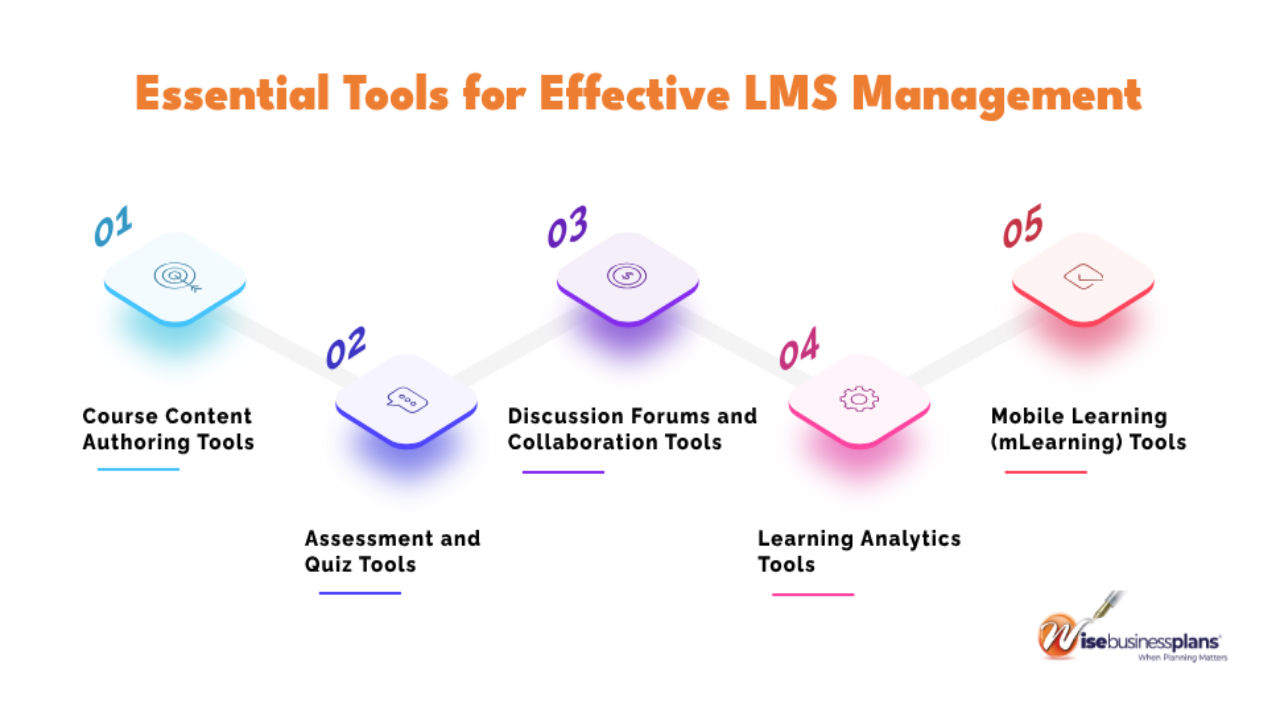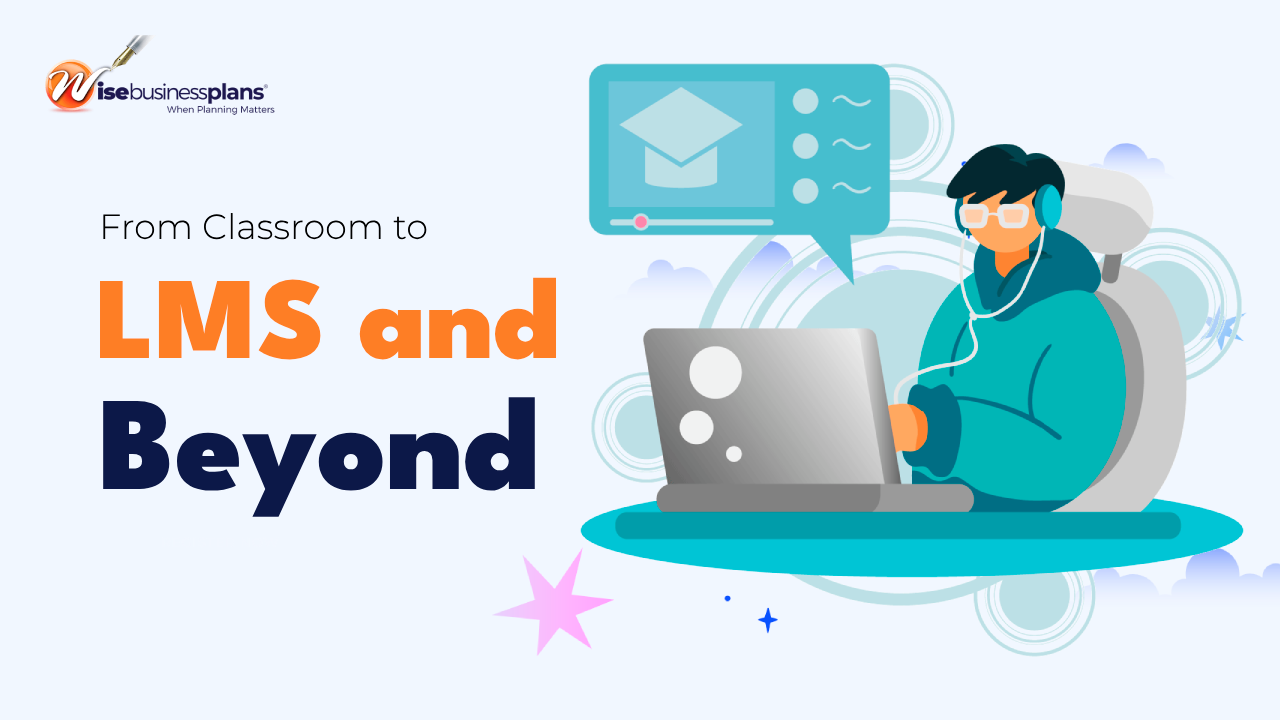The Evolution of Learning: From Classroom to LMS and Beyond
In today’s age, education has changed due to the influence of technology. Traditional face-to-face classroom learning has given way to an era of courses and Learning Management Systems (LMS), reshaping how we gain knowledge and develop skills. This article explores the evolution of learning, tracing its path from the classroom setting to the rise of LMS platforms and beyond. Let’s embark on this journey. Transition your learning platform effectively with help from our business plan writing services.
On this page
- The Conventional Classroom Learning Experience
- The Emergence of Online Education
- Introducing Learning Management Systems (LMS)
- Popular Learning Management Systems (LMS) Tools
- Moodle
- Canvas
- Blackboard Learn
- Google Classroom
- Schoology
- D2L Brightspace
- Adobe Captivate Prime
- Advantages Offered by LMS
- Some Extra Essential Tools for Effective LMS Management
- Looking for someone to write a Business Plan?
- Moving Beyond LMS. The Future of Education
- In Summary
The Conventional Classroom Learning Experience
For generations, classrooms have been at the heart of practices. Imagine a space bustling with students engaging with their teachers, collaborating with classmates, and jotting down notes. This familiar environment has long been the cornerstone for transferring knowledge across fields.
Yet this system had constraints, limited reach, rigid schedules, scarce resources, and a one-size-fits-all teaching style. With advancements, educators recognized the need for an adaptable and scalable approach to cater to diverse learning styles.
Hire our professional business plan writers now!
The Emergence of Online Education
The rise of the internet heralded an era in education by offering remote learning opportunities like never before. Online courses broke down barriers by connecting learners by location.
These platforms offer access to collections of recorded video lectures, interactive quizzes, discussion forums, downloadable resources, and personalized guidance from teachers. Students can learn at their own pace while managing their responsibilities.
Introducing Learning Management Systems (LMS)
With the rising popularity of courses, educators require a system to handle these courses effectively. This has led to the emergence of an LMS (learning management systems). LMS provides a platform that integrates all aspects of education in one central location. They include features for managing courses, such as tools for creating and sharing content and assessment tools for quizzes and assignment submission—all through a portal that caters to students and instructors.
Popular Learning Management Systems (LMS) Tools
An open-source LMS widely used in educational institutions and corporate settings. Moodle offers extensive customization options, a large community for support, and a range of features for course management, assessments, and collaboration.
Known for its user-friendly interface and robust features, Canvas is popular among educational institutions and businesses alike. It offers tools for course creation, communication, assessment, and analytics.
A long-standing player in the LMS market, Blackboard Learn provides a comprehensive suite of tools for course management, content creation, communication, and assessment. It’s commonly used in higher education.
Widely adopted in educational settings, Google Classroom integrates seamlessly with Google Workspace (formerly G Suite) apps like Google Drive, Docs, and Meet. It offers simple course management, assignment distribution, and communication features.
Often chosen for its intuitive interface and strong collaboration features, Schoology is popular in K-12 schools and districts. It offers tools for course management, communication, assessments, and analytics.
Known for its focus on personalized learning experiences, Brightspace offers adaptive learning features, multimedia content creation tools, and robust analytics. It’s used in both educational and corporate settings.
Adobe’s LMS solution is known for its user-friendly interface, mobile compatibility, and integration with Adobe’s e-learning authoring tools. It offers features for course management, tracking, and reporting.
Advantages Offered by LMS
a) Flexibility: LMS offers the flexibility to access learning materials anytime and anywhere based on convenience. Whether it’s a working managing work commitments or a student involved in activities, LMS ensures education can be tailored to suit their unique schedules.
b) Improved Collaboration: The LMS platform promotes collaboration among students and instructors through features like discussion forums and shared resources. Learners can participate in discussions with peers, collaborate on group projects, and receive feedback. All are designed to enrich the learning experience.
c) Various Content Delivery: Using an LMS, teachers can incorporate types of multimedia content (such as videos, e-books, and quizzes) into their courses. This diverse content delivery engages students through mediums catering to learning preferences.
d) Evaluation and Progress Monitoring: LMSs provide tools for creating and assessing assignments, quizzes, and exams. They enable real-time tracking of student progress and performance. This data-driven approach helps teachers track performance and offer feedback on areas that need improvement.

Some Extra Essential Tools for Effective LMS Management
- Course Content Authoring Tools: These tools allow instructors to create engaging multimedia content such as presentations, videos, quizzes, and interactive modules without needing advanced technical skills. Examples include Adobe Captivate, Articulate Storyline, and Camtasia.
- Assessment and Quiz Tools: These tools enable instructors to create and administer assessments, quizzes, and exams online. They often come with features for randomizing questions, setting time limits, and providing immediate feedback to learners. Examples include Quizizz, Kahoot, and Google Forms.
- Discussion Forums and Collaboration Tools: These tools facilitate communication and collaboration among learners and instructors. They provide spaces for discussions, group projects, and peer feedback, fostering a sense of community in online learning environments. Examples include Moodle Forums, Slack, and Microsoft Teams.
- Learning Analytics Tools: Learning analytics tools track and analyze learner progress and engagement within the LMS. They provide valuable insights into learners’ behavior, performance, and areas for improvement, helping instructors make data-driven decisions to enhance the learning experience. Examples include Blackboard Analytics, Moodle Learning Analytics, and Canvas Data.
- Mobile Learning (mLearning) Tools: As mobile devices become increasingly prevalent, mLearning tools enable learners to access course materials and participate in activities from their smartphones or tablets. These tools often offer responsive design, offline access, and compatibility across various mobile platforms. Examples include Moodle Mobile, Blackboard Mobile Learn, and Adobe Captivate Prime.

Looking for someone to write a Business Plan?
Hire our professional business plan writer
Moving Beyond LMS. The Future of Education
While Learning Management Systems have been revolutionary in educational delivery methods, we are now seeing new concepts emerging in the realm of online learning:
a) Gamification: Integrating content with gaming elements has become increasingly popular. Learners now experience environments with features, like reward systems and badges, that enhance concept-based learning experiences.
b) Machine Adaptive Learning: The advancement of Machine Learning technology allows systems to analyze student data to personalize the learning journey further. Adaptive learning platforms utilize ML algorithms to assess a student’s pace and preferences and tailor the curriculum accordingly.
c) Augmented Reality (AR) & Virtual Reality (VR): Augmented Reality (AR) & Virtual Reality (VR) offer chances to create engaging experiences that go beyond traditional learning methods and immerse students in lifelike virtual environments.
In Summary
As we look back on the progression of education, we can see how the shift from classrooms to learning platforms has transformed the field. With increased flexibility in learning options, improved collaboration opportunities, and personalized learning experiences, the future of education holds promising advancements, with elements like gamification, machine learning, augmented reality, and virtual reality leading the way.
Embracing these innovations will pave the way for an inclusive educational journey that empowers learners worldwide. Let’s step beyond our classrooms and embrace an era of digital cooperation, tailored education through online platforms, and more!








